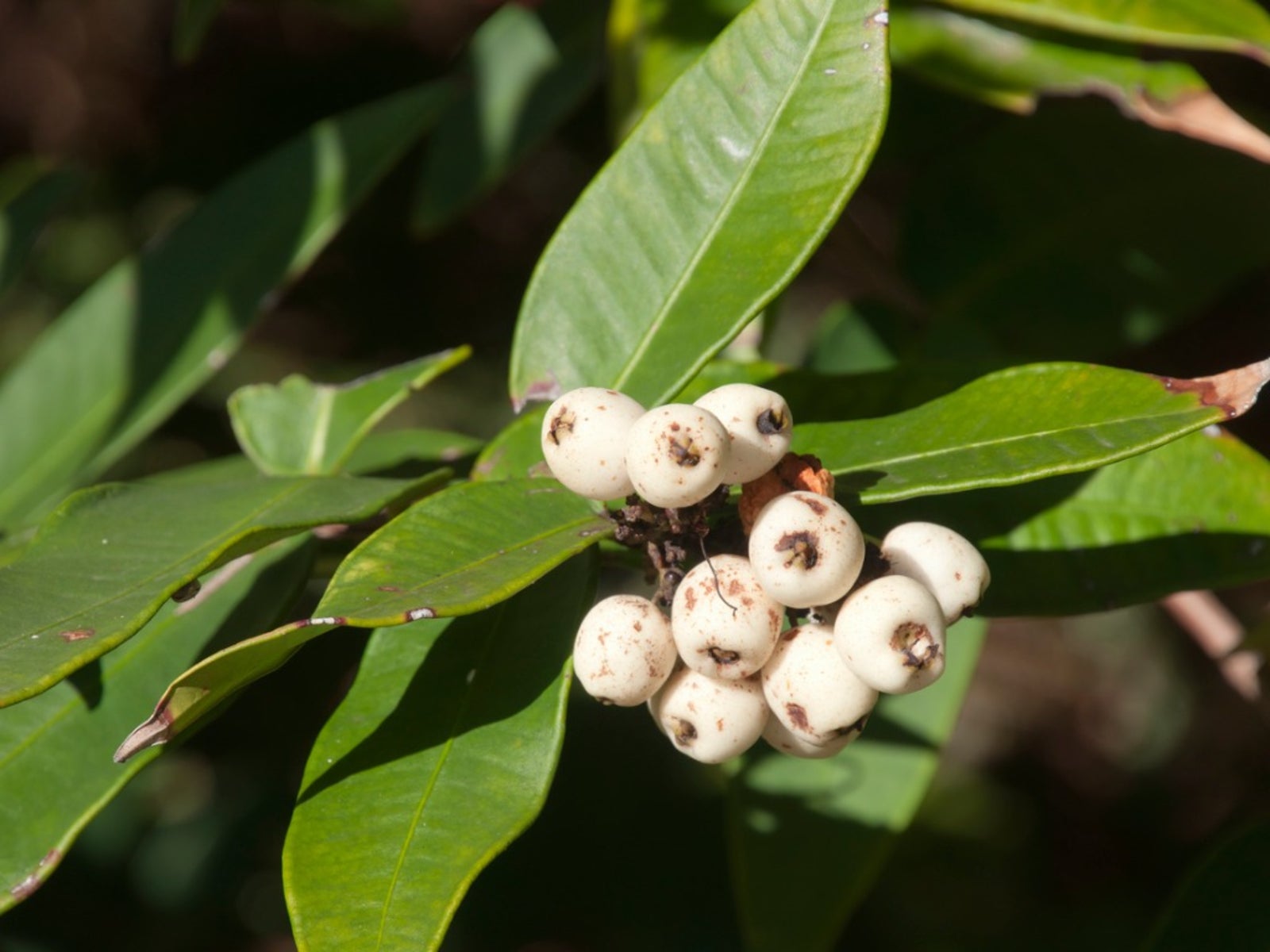What Are Midgen Berries: Learn About Midgen Berry Plants

Native to Australia’s coastal regions from northern New South Wales to Fraser Island in Queensland, midgen berry plants (sometimes spelled midyim) are a favorite with Aboriginal people. Since they hail from down under, many of us have never heard of them. So, what are midgen berries? Read on to find out how to grow a midgen berry plant and other information about midgen berry care.
What are Midgen Berries?
Midgen berries (Austromyrtus dulcis) are sometimes referred to as sand berry, as they are a native bush food occurring naturally along Australia’s coastal regions. They are a close relative of the Lilly Pilly, both of the Myrtle family. Midgen berries grow on shrubs of around 6 feet (2 m.) in height. Midgen berry plants have ovate, dark green leaves. The foliage is rich in oil, giving the leaves a gorgeous sheen. In cooler regions, the green foliage takes on reddish tones. The plant flowers in the spring and summer in their natural habitat. Emerging tender foliage shoots are pink and combined with the lovely, white flowers make attractive specimens in the landscape. The resulting berries are small, white, and blotched with gray, which makes them appear to be almost mauve in hue especially combined with their hairy, pinkish-brown calyx. Birds love them but how about humans? Can we eat midgen berries?
Is Midgen Berry Fruit Edible?
Many Australian gardeners are flocking to fill their landscapes with native plants to reduce their environmental impact from chemicals and fertilizers, and midgen berries fit the criteria. Midgen berry plants are a hardy species that are rarely susceptible to diseases or pests. There’s another great reason to incorporate midgen berry into the landscape; the berries are, indeed, edible. The mildly crunchy berries are not only edible, but provide calcium, iron, vitamin C, and dietary fiber. Midgen berries are mild in flavor, somewhat akin to a blueberry combined with the essence of ginger, eucalyptus, and nutmeg. Wow! Berries can be eaten raw out of hand or are often used to make pies, preserves, or added to fruit salad. Eat them quickly though, midgen berries have a very short shelf life.
How to Grow a Midgen Berry Plant
Midgen berries are often trained into a low-growing hedge in either full sun to part shade, but they can also be planted in containers, hanging baskets, cottage gardens, in rows, or as mass plantings. Midgen berry shrubs are most suited to tropical regions. In cooler areas, plant them under some overhanging tree branches to give them protection from frost. Since the plant is native to Australia’s coastal areas, midgen berry does well in sandy coastal conditions provided it is protected from harsh, salt-rich winds. Midgen berry plants adapt to a wide range of soils if there is good drainage combined with consistent moisture. Prior to planting midgen berry, enrich the soil with some well-aged compost and then mulch around the plants well to help retain moisture. Once the plants have been established, there is little need for further midgen berry care beyond keeping an eye on watering it regularly. As mentioned, the plant is afflicted by few diseases or pests. Pruning is only necessary if you want to train the plants into a hedge.
Gardening tips, videos, info and more delivered right to your inbox!
Sign up for the Gardening Know How newsletter today and receive a free copy of our e-book "How to Grow Delicious Tomatoes".

Amy Grant has been gardening for 30 years and writing for 15. A professional chef and caterer, Amy's area of expertise is culinary gardening.
-
 Grow ‘Karl Rosenfield’ Peony Plants For The Ultimate Frilly Border Beauties And Cut Flowers
Grow ‘Karl Rosenfield’ Peony Plants For The Ultimate Frilly Border Beauties And Cut FlowersFor frilly double magenta peony petals infused with a heady fragrance, grow ‘Karl Rosenfield’ peony plants. Here’s how to cultivate the ultimate plushy blooms
By Tonya Barnett
-
 10 Common Composting Problems That Can Spoil Your Garden Gold – Plus Easy Fixes
10 Common Composting Problems That Can Spoil Your Garden Gold – Plus Easy FixesLearn how to troubleshoot common composting issues before they ruin your stash – from bad smells and bugs to materials not breaking down as they should.
By Susan Albert